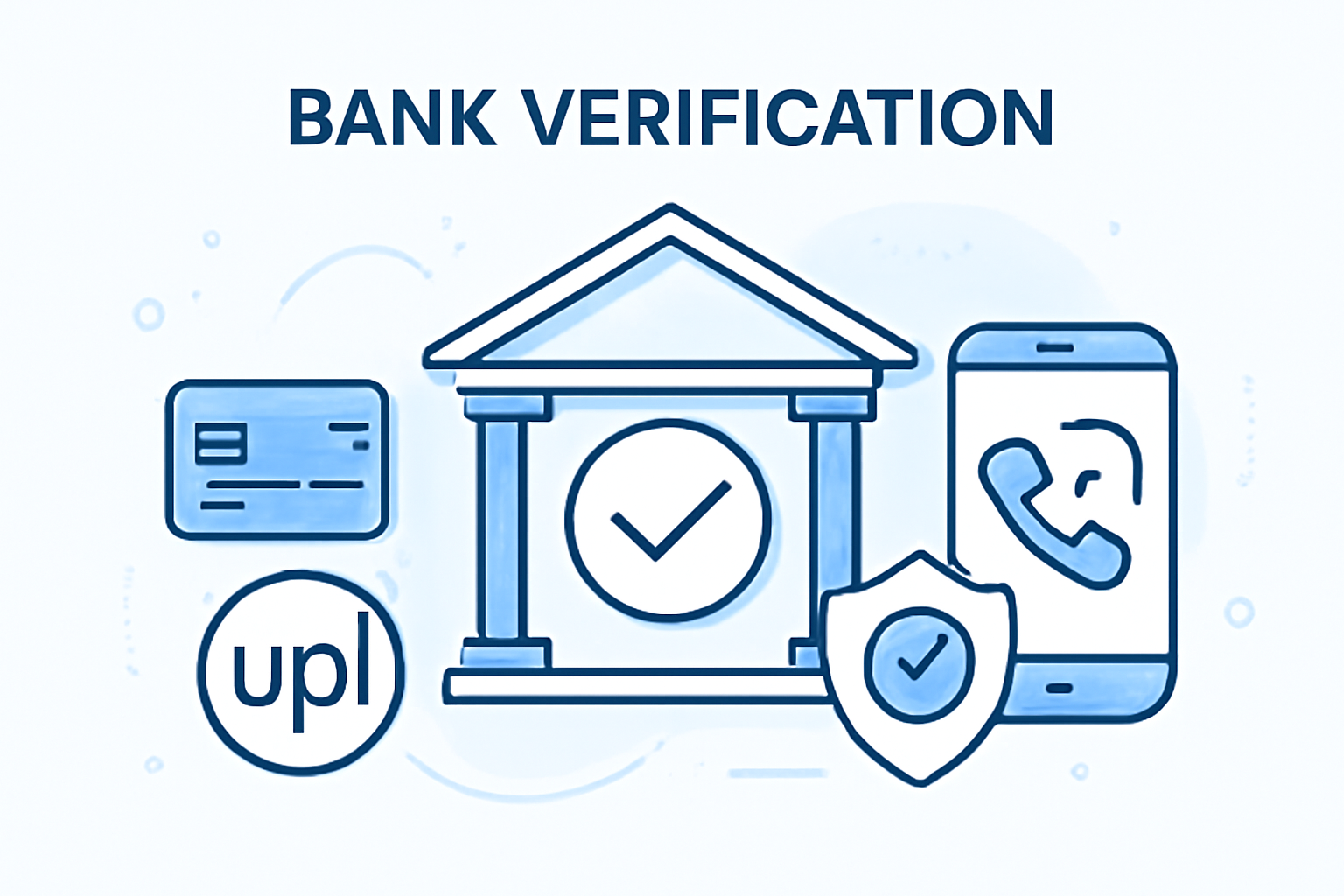Bank Verification API Category
Overview#
The Bank Verification API category provides a comprehensive suite of tools for validating and verifying banking details across multiple financial channels in India. These APIs enable businesses to authenticate bank accounts, UPI IDs, and mobile numbers linked to banking services, ensuring secure transactions and reducing fraud. By offering real-time verification capabilities, these services help organizations streamline customer onboarding, enhance payment security, and maintain regulatory compliance.Parent Category: Root
Child Categories: Reverse Penny Drop
APIs in this category: Bank Verification, Bank Verification Pennyless, Bank Verification Mobile, Mobile To Bank, Mobile to UPI, UPI Verification, UPI Advanced V2, UPI Mobile To Name, Mobile To Multiple UPI, Mobile To Account
Key Capabilities#
Main Functionality
This category provides comprehensive verification solutions for Indian banking channels, including traditional bank accounts, UPI IDs, and mobile-linked banking services. The APIs enable real-time validation of account details, ownership verification, and cross-channel mapping to ensure secure financial transactions and reliable KYC processes.
Bank Account Verification
Validate bank account details including account number, IFSC code, and account holder name through various methods including penny drop, pennyless verification, and mobile number mapping.
UPI ID Verification
Verify UPI IDs and virtual payment addresses (VPAs) to confirm their validity, active status, and associated account details, with options for basic and advanced verification levels.
Cross-Channel Mapping
Map relationships between mobile numbers, bank accounts, and UPI IDs to verify ownership and establish connections between different financial identifiers used by the same customer.
Common Use Cases#
E-commerce & Marketplaces
Streamline customer onboarding by validating bank account details during account opening
Verify payment destination accounts before processing high-value transactions
Validate customer-provided banking details during loan disbursement processes
Integration Considerations#
Best Practices
Implement appropriate error handling to manage verification failures gracefully
Cache verification results (where appropriate) to reduce redundant API calls
Use the most suitable verification method based on your use case requirements and customer friction tolerance
Implement proper security measures to protect sensitive banking information during transmission
Bank verification services are primarily designed for Indian banking systems and may not work with international accounts
Some verification methods may incur small transaction costs (e.g., penny drop verification)
Response times may vary based on the banking partner's processing capabilities
Certain verification methods may require end-user consent or notification
Results are dependent on the accuracy and currency of data maintained by banking partners
How APIs in this Category Work Together#
The Bank Verification APIs are designed to complement each other, providing multiple verification pathways that can be used independently or in combination to achieve different levels of assurance and user experience.Key Integration Patterns:Bank Verification + Bank Verification Mobile: First verify account details directly, then cross-reference with mobile number for additional ownership confirmation
Mobile To UPI + UPI Verification: Map a customer's mobile number to their UPI ID, then verify the UPI ID's validity and status
Bank Verification Pennyless + Reverse Penny Drop: Use pennyless verification for initial validation, followed by reverse penny drop for higher-assurance cases or dispute resolution
KYC Verification: Complements bank verification by providing identity verification services that can be used alongside bank account validation for comprehensive customer onboarding
Payment Processing: Bank verification serves as a precursor to payment initiation, ensuring transaction destinations are valid before funds are transferred
Fraud Detection: Bank verification data can feed into fraud detection systems to identify suspicious patterns or mismatches in banking details
